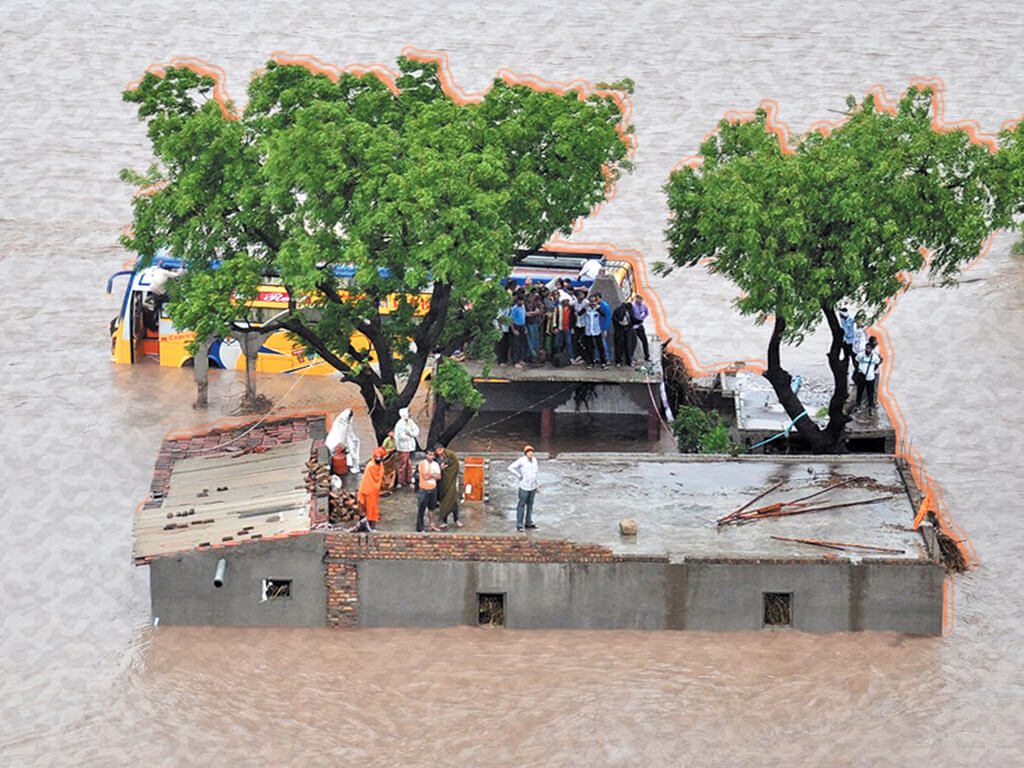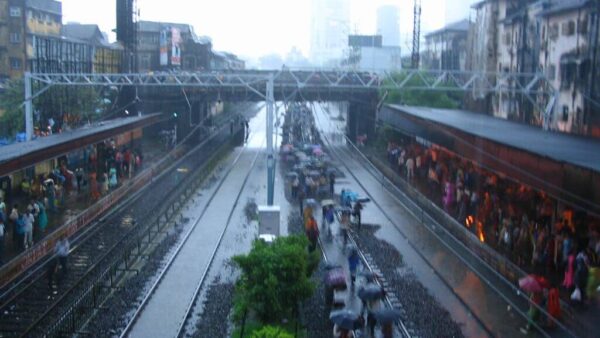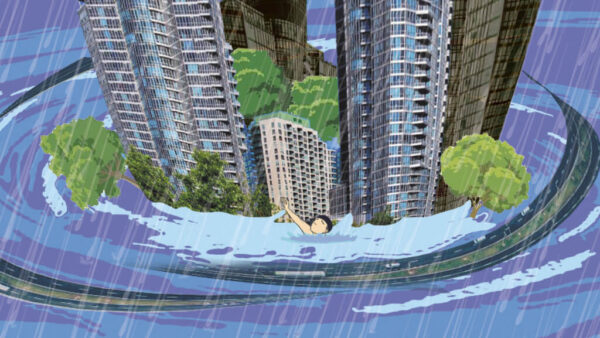The annual climate summit of the United Nations, called Conference of Parties, in its 28th edition this year in Dubai was the grandest but the most contentious summit since it began nearly three decades ago. It had significant outcomes. The important one signalled the beginning of the end of the fossil fuel era with a swift, just, and equitable transition.[1] Called the UAE Consensus, it was ratified by nearly 200 countries.[2] One of the summit’s key outcomes, the first Global Stocktake, called on nations to present ambitious emission reduction targets in their 2025 climate action plans and underscored the imperative to limit warming to 1.5 degrees Celsius.[3] A landmark achievement was the agreement on the Loss and Damage Fund for nations disproportionately impacted by climate change, resulting in nearly USD 800 million in commitments.[4]
The summit featured 10 declarations and 170 announcements, including a first-ever and welcome declaration on food systems, health, and multi-level actions on urbanisation.[5] It also resulted in the mobilisation of more than $85 billion in funding, including historic replenishments for the Green Climate Fund and Adaptation Fund, marking a positive phase in climate action.[6] With these under its belt, the Dubai COP sounds like an impressive success despite its many conflicts of interest.
However, the summit revealed fault lines and limitations. There was a substantial funding shortfall for clean energy transitions and climate adaptation in the developing countries which meant that critical discussions on climate finance were kicked down to next year. There was also a record presence of 2,456 fossil fuel lobbyists who out-numbered delegates from climate-vulnerable nations, and drew attention to the dominance of the industry in COP discussions.[7] And, as is well known by now, the summit faced criticism for shying away from a definitive denouncement of fossil fuels; the incremental approach got some praise but others deemed it a death warrant.[8]
Unfortunately, for vulnerable communities – especially the millions of poor in cities – the COP28 ‘gains’ appear distant, inconsequential, and detached from their lived realities which have seen an increasing incidence of heat waves, bitter cold, and unprecedented heavy rainfall. Millions, who count as urban poor and marginalised communities in our cities, find themselves on the periphery of global discussions on climate change – both at COP and nationally – to alter that. The way ahead is for the central government to decentralise climate action more to cities, document and quantify the climate impact on the urban poor, and acknowledge that informality in work and housing are key aspects of cities rather than violations and encroachments.
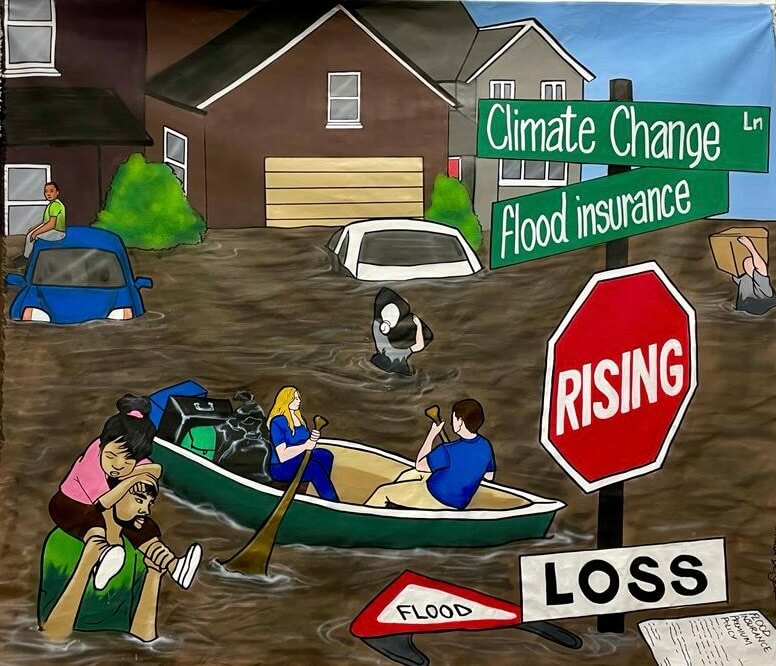
Cities in COP28, finally
The COP28 marked a significant shift in climate discourse by giving cities a prominent role. With cities projected to accommodate 80 percent of humanity by 2050 and responsible for 70 percent of the carbon-dioxide emissions now, focusing on urban areas was long overdue to meet the commitments of the Paris Agreement of 2015. The summit’s inaugural Local Climate Action Summit on December 1 united over 500 mayors and subnational leaders,[9] and secured $467 million for urban climate action, emphasising the involvement of cities in the Nationally Determined Contributions (NDCs) and financing. The event coincided with the first-ever COP declaration on climate and health.
On December 6, the summit hosted the second Ministerial Meeting on Urbanisation and Climate Change with 71 countries joining the Coalition for High Ambition Multi-Level Partnerships (CHAMP).[10] Commitments under this involve robust urban climate actions, and improved cooperation between local and national governments; the COP28 agreement reflected this shift with nomenclature such as “multilevel” action and emphasising vulnerable “local communities” to develop sustainable and climate-resilient cities. This is the strongest recognition of cities as crucial battlegrounds for climate action.
India in COP28
India’s interventions at COP28 were received positively. The country positioned itself as a proactive player on the international stage, its delegation laid claim to host COP33, emphasised the urgency of accessible climate finance for the developing nations, voiced concerns for the Global South, and pushed for equity reminding delegates of Common but Differentiated Responsibility (CBDR).[11]
It also highlighted initiatives like the Green Credits Programme and addressed the vulnerability of the Himalayan region. Its ‘achievements’ included a 33 percent reduction in emission intensity and reaching 40 percent non-fossil fuel-based electricity capacity, 11 and nine years respectively ahead of schedule.[12]
Despite the strides, India’s absence from key COP declarations on health, food systems, and energy raised concerns.[13] The lack of an urban ministerial delegation underscored gaps in representation at the city-urban level.[14]
India’s cities and the vulnerable
India faces significant challenges with over 75 percent of its territory experiencing various climate impacts.[15] [16] Recent events such as the heavy rain and flooding in Delhi and cyclone Michaung hitting Chennai highlighted the increasing frequency of climate-related disasters in cities.[17] [18] The once-in-a-century Mumbai floods of 2005 now occur regularly. Several cities scorch under soaring temperatures every summer, causing heat-related illnesses and impairing livelihoods of outdoor workers and people in informal settlements.
India’s cities also grapple with persistently high pollution levels, inadequate services, and substantial development deficits.[19] Millions of people in informal settlements and informal livelihoods bear a disproportionate burden, with 50-70 percent of the urban population defenceless against the intersecting vulnerabilities in housing, livelihood, and socio-economic factors. State responses increasingly lack empathy for the urban poor, as seen during the G20 summit when slums were covered or demolished.[20]
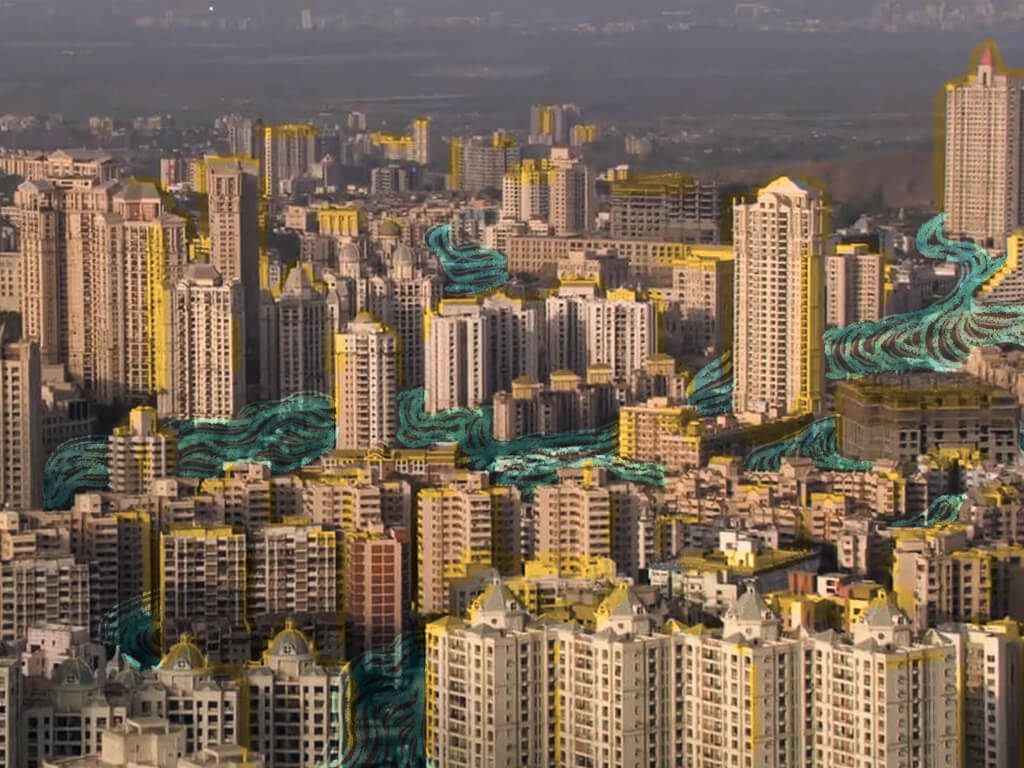
Top-down, unscientific urban planning exacerbates the situation, contributing to maladaptation rather than mitigation of climate impacts. High-value infrastructure such as the Mumbai Coastal Road Project, waste incinerators, and smog towers in Delhi, worsen urban vulnerabilities.[21] [22] [23] The centralisation of actions and interventions in Indian cities is worrying. While some Urban Local Bodies like those in Mumbai, Chennai, and Bengaluru are making efforts for climate action, these initiatives remain insufficient and lack coordination.[24]
The climate action plans do not have a national framework and statutory mandate, leaving communities and their participation mostly out of climate action in cities. Also, increasingly all plans – heat action plans, flood mitigation plans, disaster management plans, master plans and climate action plans – overlap with contesting documents and contradictions, creating a muddle of city planning actions. There is another aspect – plans, futile or not, do not extend beyond the metros leaving the 10,000-odd Tier 2 and 3 cities to their own devices. The need to empower all ULBs and decentralise climate action was never greater.
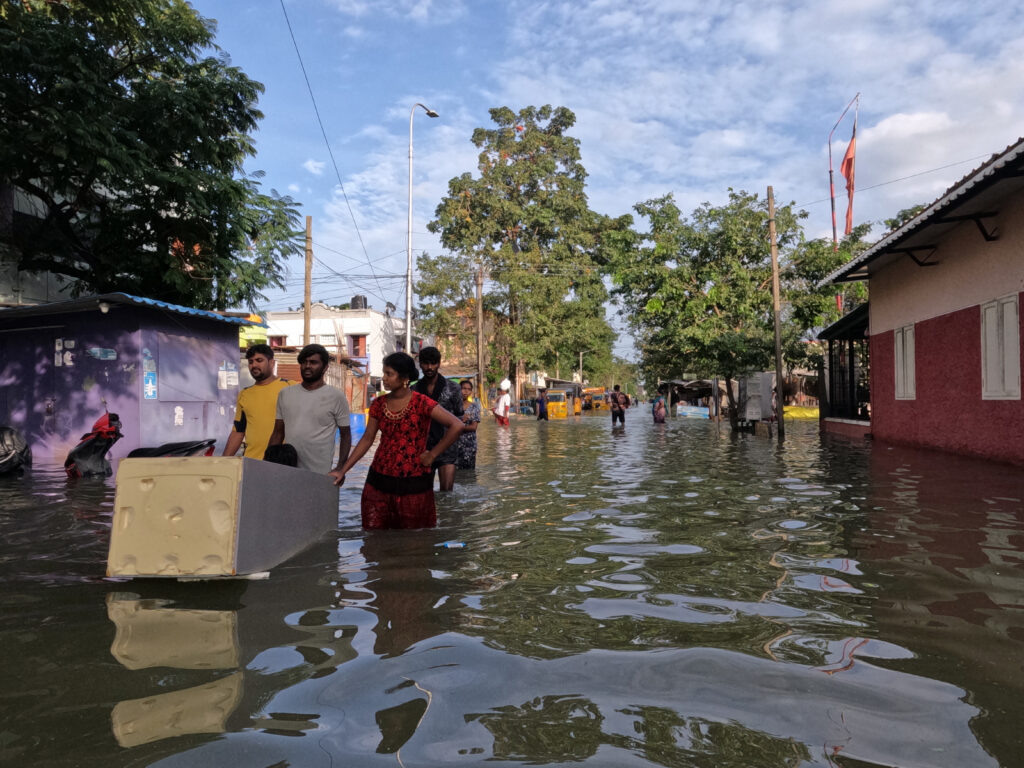
Photo: Palani Kumar
Centre-stage the urban vulnerable
As COP28 increasingly recognises cities as pivotal players, the need to acknowledge urbanisation as a driver of climate action gains prominence. It is the “local communities” that must be supported with climate finance and capacities, focussing specifically on the most marginalised in cities, and ensuring their inclusion in climate action. The following strategies can facilitate this:
Eliminating the urban blind spot: Urban areas have historically been excluded from climate planning, creating a policy blind spot in India’s climate policies and even the Nationally Determined Contributions (NDCs).[25] The CHAMP declaration of COP28 is an opportunity to address this lacuna, recognise urban or city governments as key stakeholders in climate action and recipients of climate finance. The NDCs are to be recalibrated to include local communities, addressing their specific needs and concerns, to build resilience against climate events.
Recognising urban local communities as stakeholders: Adhering to the principle of ‘Nothing for us, without us’, it is imperative to acknowledge that the most vulnerable people or communities in cities are among the worst impacted by climate events. These include people living in informal settlements, the urban homeless, informal workers, and other numerous categories. While the UNFCCC framework recognises nine constituencies like farmers, indigenous people, youth, and gender, the need now is for specific articulation and representation of urban local communities that shoulder many climate actions at the lowest level.[26] This, in India’s cities, translates into millions of people. The effort has to be to ensure that they speak for themselves, raise their concerns at the COPs and at the national level.
Assessing and mapping emerging urban vulnerabilities: The emphasis of the Global Stocktake on “local communities” underscores the need to articulate and document the vulnerabilities in cities; these may differ from city to city too. It also further emphasises the need for “up-to-date assessments of climate hazards, climate change impacts and exposure to risks and vulnerabilities”.[27] This documentation is crucial at two levels – for Indian cities to move forward on climate mitigation actions, and to firm up an international framework to diversify community representation.
Decentralising climate actions through re-imagining 74th CAA: Aligned with the CHAMP declaration, establishing shared governance at national, state, and local levels would now be necessary. Climate actions and interventions are heavily centralised and work in a top-down mechanism with not much room for engagement with cities and communities as key actors. The currently under-used 74th Constitutional Amendment Act (CAA) should be revitalised to empower Urban Local Bodies to address climate change as a potential 19th function.[28] This will be challenging in the present climate of re-centralised governance in the country but it is the best bet to deal with the highly decentralised climate threat in our cities. This will also mean that India’s representation of climate concerns at COP are attested by cities, including climate action in the smaller and fast-growing cities too.
Documenting loss and damage: The urban poor and marginal communities are forced to suffer daily loss and damage, particularly within the informal sector, during extreme climate events such as high heat and rain. Documenting, categorising, and quantifying these impacts is vital for integrating the losses into global debates so that these go beyond anecdotes and stories in the media or informal reports by the civil society. This will help establish the macro-narrative of how much the marginalised in cities suffer. Also, it will temper India’s international (COP) posturing as an ‘achiever’.
Recognising Common but Differentiated Responsibilities (CBDR) nationally: Translating the CBDR at city level is an important step ahead. Acknowledging differentiated impact on cities – even within a city on different classes of people and communities – is crucial to address funding disparities. Doing this will help strengthen India’s advocacy of CBDR at the international level. This would also ensure that the vulnerable people in cities receive proportional financial support for climate action, preventing funds from being diverted to large-scale infrastructure and interventions not required by such communities.
Recognising informality and people-based solutions: For urban poor communities, informality is the mainstay of their existence. With over 80 percent of the workforce employed in the informal sector and 40-70 percent living in informal people-built settlements in cities, informality needs to be recognised as an intrinsic part of the urban – and as part of the solution. Only then can people-based solutions to climate challenges be leveraged. Local innovations that are affordable, frugal, people-built, and low-carbon need to be incentivised. This is in sharp contrast to the framework of existing climate action and environmental protectionism that views informality as violations and encroachments.
Reimagining urban planning for inclusion, sustainability, and disruptions: Over-hauling archaic and pre-climate change urban planning policies is essential. Urban planning has to move away from planning for grey infrastructure – or dominance-over-nature approach – to planning for green, blue, and public good infrastructures. This shift includes recognising and allocating space for informal settlements and livelihoods, urban commons, and public-green-blue networks within master plans. Also, urban planning needs to better predict disruptions, displacements, and migrations due to various climate impacts like sea level rise, flooding, and other projected disasters. Impending reforms in urban planning are an opportune space.[29]
Developing knowledge sharing and capacity building platforms: Urging a departure from solutions that are not economically viable and socially feasible, allowing socially feasible solutions to emerge from communities and cities of the Global South are crucial. Such capacity building, supported by financial allocation and trained community human resources, can ensure that cities and local communities prove to be the bulwark of climate action in a decentralised way.
Breaking silos for coordinated climate action in cities: Future climate policies should transcend silos and foster collaboration among key national actors like urban development, climate change, labour, disaster management authorities, home affairs and so on. Adopting a convergence model and establishing climate cells at various administrative levels ensure integrated and effective climate governance, with a specific focus on communities as drivers of change. This approach is vital for effective climate governance.
India, thus, stands at a pivotal moment to adopt a proactive role in climate leadership on cities beyond COP28. Rather than passively waiting for future COPs, India can advocate the acknowledgement of urban vulnerable local communities in the international climate initiatives and steer the narrative for climate action in cities of the Global South. The work, though, begins at home.
Aravind Unni, an urban practitioner and policy expert, has ground experience of working with communities over the past 12 years. He is actively involved in participatory planning, formulating policy recommendations for people’s concerns related to housing and livelihoods, and advocating for equitable and just cities. He works with civil society campaigns on the inclusion of urban poor, and plays a role in the grounding of climate action interventions for Indian cities with civil society networks.
Illustrations: Shivani Dave

